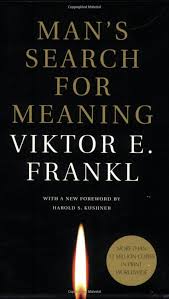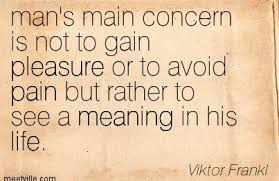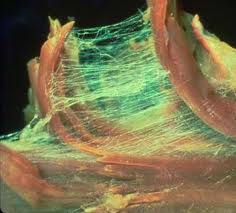“Man’s Search for Meaning”
by Viktor Frankl

“Between stimulus and response, there is a space. In that space is our power to choose our response. In our response lies our growth and our freedom”
If the above quote does not make you want to read this mesmerizing book then read on because it gets better. Viktor Frankl’s bestselling legendary book just keeps on giving. The book is divided into two parts. The first is titled, “Experiences in a Concentration Camp” and though he does give graphic description of the “hell” he lived through while incarcerated, Frankl focuses more on how he, as a psychotherapist, observed and interpreted how the human psyche coped and survived. It is a tough first 93 pages to read but does effectively set up the second part titled, “Logotherapy in a Nutshell”. Logotherapy, (Logo is Greek for “Meaning”), is the psychotherapy that he developed. Over the last 53 pages of the book he explains his theory, and on almost every page there is a nugget of wisdom to be absorbed.
the psychotherapy that he developed. Over the last 53 pages of the book he explains his theory, and on almost every page there is a nugget of wisdom to be absorbed.
With this review it is my hope that I do this very powerful book the justice it deserves. It has the power to help enhance your personal life and the interaction you have with others, but it also has the potential to have a significant effect on a greater scale, for as he says in the last two sentences :
“Since Auschwitz we know what man is capable of.
And since Hiroshima we know what is at stake.”
Read more…
Sleep
Introduction
Sleep, you can’t live a productive life without it but we find it increasingly difficult to find the time to do it and to do it effectively. How many times have you heard that to be healthy we need 8 hours of sleep a night? How many times have you woken up in the morning after trying to get those 8 hours of sleep and still felt tired? Does everyone need the same amount of sleep? Why do some people seem to function on only 5 or 6 hours of sleep a night while other need 9 or 10? What constitutes a good night’s sleep? Is it the quality of sleep or the quantity of sleep that is most important? What actually happens mentally and physically when we sleep? Does exercise or nutrition affect our ability to get a good night’s sleep? What is Insomnia and sleep apnea, their causes and how can they be treated?
same amount of sleep? Why do some people seem to function on only 5 or 6 hours of sleep a night while other need 9 or 10? What constitutes a good night’s sleep? Is it the quality of sleep or the quantity of sleep that is most important? What actually happens mentally and physically when we sleep? Does exercise or nutrition affect our ability to get a good night’s sleep? What is Insomnia and sleep apnea, their causes and how can they be treated?
The science of sleep, and sleep conditions that affect the quality of our sleep are not well understood by the general public. This article will try to bring clarity to this issue with the hope that a better understanding of sleep and issues that affect it will lead you to a better night sleep. Read more…
The Myofascia
1. What is It
Fascia or myofascia is the dense, tough tissue which surrounds and covers all of your muscles and bones. This outer fascial covering is very strong and very flexible. In fact, it has a tensile strength of over 2000 pounds.
Under a microscope, myofascia resembles a spider web or fish net. It is very organized and very flexible in a healthy state.

Myofascia can best be described as a complete body suit which runs from the top of your head down to the bottom of your toes. It is continuous, has no beginning or end and can be found almost everywhere in your body. Like yarn in a sweater the entire body is connected to every other part of the body by the fascia. It is a continuous weave of material. And, like a pull in a sweater, damage to an area of fascia can affect other distant areas in your body even years later. Read more…
Good posture is important for your physical and emotional health. Good posture is defined as your head, neck, shoulders, hips and feet all in proper alignment relative to each other. When a person is viewed from the side, this means that the person stands tall with the head facing forward, with the neck over the shoulders and not protruding forward. The shoulders are back, not rounded and the hips are placed over the feet. There is no excessive roundness of the upper back (khyphosis) or excessive inward curvature of the lower back (lordosis). Viewed from the front, the persons head is straight and not tilted to the right or left, the shoulders are level as are the hips. The feet point straight ahead and are not rotated out or in.
 Good posture illustrated
Good posture illustrated
Read more…
Millions of older adults suffer from chronic muscle pain and stiffness on a daily basis. The causes of this functional limiting disability are many and range from previous trauma or injury from work or a sporting event, a lack of exercise due to work requiring a lot of sitting or stationary standing or just being a coach potato, repetitive strain from too much exercise or an exercise load that was too much/ too soon, poor nutrition, being overweight or a person’s inability to deal effectively with emotional stress.
Low back pain and stiffness is the most common area of complaint, affecting over 30 million North Americans yearly, but neck, shoulder, upper back, hips, upper and lower legs and feet are also frequent areas of chronic muscular disability. When a person starts to feel chronic muscle pain and stiffness often their first reaction is to become inactive. Their rationale is if it is uncomfortable and takes great effort to move then don’t move and they won’t suffer as much. The second most common response is to reach into the medicine cabinet for some Aspirin®, Tylenol® or Advil®. Unfortunately, both of these actions only treat the symptoms and not the cause.
By becoming more inactive, the soft tissues of the body, muscles, tendons, ligaments and fascia, lose their flexibility and increased tissue tension results. Medication can only chemically mask the pain and stiffness and has no restorative properties. Both inactivity and pain medication are appropriate responses to acute injury when rest and decreasing the inflammatory response is a priority but are contra-indicated when someone is suffering from a myofascial chronic pain syndrome. In these cases mobility exercises and myofascial release techniques are the treatments of choice in dealing with the anatomical and physiological problems rather than just the symptomology. Read more…
By: Cassandra Pickard, Licensed Holistic Practitioner, Certified Thai Massage Practitioner, Registered Thai Therapist – Owner of Embrace Metta Thai Massage, Toronto, ON
As we get older, most of us start to feel the effects of the general wear and tear on our bodies. We start to experience that ‘old’ feeling, generally regarded as the stiffening of our joints, and this results in having more difficulty doing things that seemed so effortless before. Getting out of bed in the morning, gardening, playing with grandkids or pets does not seem as easy as it once was.
Thai Massage is particularly supportive of an aging body and helps to maintain and restore joint mobility. With increased joint mobility, aches and pains are not as noticeable or are relieved altogether helping you to feel younger and more active. Thai Massage has very few contraindications, so anyone in relatively good health can enjoy the benefits of this type of bodywork. The massage is adapted to suit your needs, so it doesn’t matter what your age, size or flexibility level is. Many first time recipients are actually surprised at what their body can do and the degree of stretching that they can obtain. Read more…
For as many people that exercise there are excuses not to continue to exercise. Some of these excuses are relatively legitimate. There are times in our lives that exercise just does fit, that it would cause too much stress to take the time to exercise or it would increase the risk of physical injury. However, these “legitimate excuses” are rare and in most cases people can modify their busy life and work schedule or the intensity of their exercise to make it work.
Excuses not to exercise can be classified as being externally or internally founded. Externally, excuses range from the gym is too far away, it is too hot/cold/wet, I have no one to work out with, my favourite instructor/personal trainer is away, work is too busy, my gym clothes are dirty etc., etc. 99.9% of these external excuses are easily managed with a little planning to your schedule and motivation to really want to exercise. Exercise is fun and most people agree that once they begin an exercise session they enjoy it and are glad they have made the effort to do it even if it meant changing or reprioritizing their schedule.
Read more…
Exercising is not hard, however, for many people, especially older adults, knowing how, when and where to start exercising is the challenge. Unfortunately, it is a common held belief that you need sophisticated equipment, or be a member of an expensive fitness facility to start exercising. This is simple just not the case.
Most people exercise every day by just walking but many don’t consider this “formal exercise”. Maybe that is because it is easy to do and something you can do any time, anywhere. But walking is an excellent form of cardiovascular exercise and walking has many other health benefits such as;
Read more…
Active Living and Wellness can be defined as the search for enhanced quality of life, personal growth and potential through positive life style behaviours and attitudes. If we take responsibility for our health and well-being, we can improve our health on a daily basis. The quality of our diet, the amount of regular exercise we get, our ability to handle stress effectively, the quality of our relationships with family and friends and our career success all have an influence on our state of wellness. Read more…

 the psychotherapy that he developed. Over the last 53 pages of the book he explains his theory, and on almost every page there is a nugget of wisdom to be absorbed.
the psychotherapy that he developed. Over the last 53 pages of the book he explains his theory, and on almost every page there is a nugget of wisdom to be absorbed.






